Nostalgia on tuesday: Before the bus
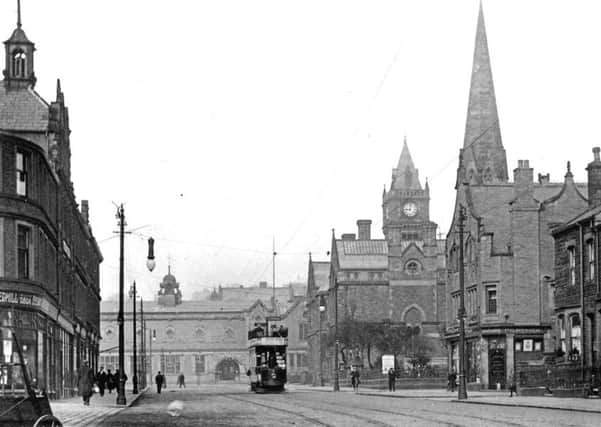

Thereafter, motor buses took control and are still in operation today.
Near the turn of the 19th century, the independent Keighley Tramways Company, promoted by a group of local businessmen, constructed a horse-drawn tramway from Ingrow through the town centre to Utley. The stretch from North Street to Ingrow was opened on Wednesday May 8 1889; the Utley-North Street section on December 18 1889. During 1897 short sections were added: to the Roebuck Inn at Utley and to the new Ingrow Bridge.
Advertisement
Hide AdAdvertisement
Hide AdA contract for the Ingrow section was given to Messrs Holmes & King of Liverpool. The contract for the Utley section was awarded to Messrs Winnard & Nicolls of Wigan. There was a depot branching off South Street and along Queen’s Road. Seven tramcars, supplied by Starbuck Car & Wagon company Ltd, all open top and double deck, operated on the system.
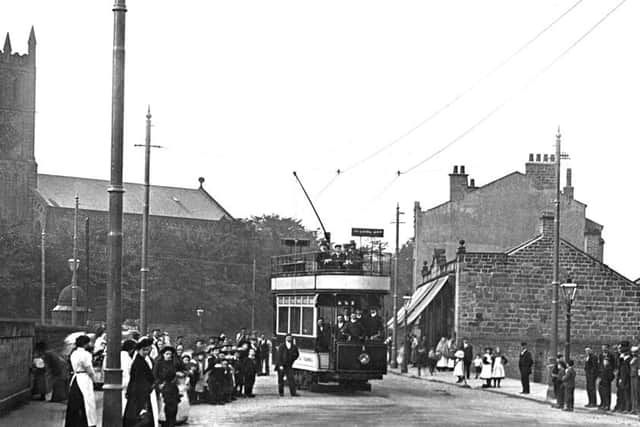

The large cars could carry 44 passengers, had wooden seats and were lit by paraffin lamps, one at each end. Unfortunately, in January, 1891 all but one of the horses contracted ‘pink eye’, and whilst none died, services were suspended for around eight weeks.
Running at a loss, the company, sold out completely to Keighley Corporation on September 21 1901. There had been an agreement in place from November 1896 where the corporation had purchased the tram track for £5 and leased it back to the company.
Having bought out Keighley Tramways Company, Keighley Corporation continued to run horse trams until Saturday, May 28 1904. Between the latter date and the start of electric traction from October 12 1904, an occasional wagonette supplied the transport. Working the horse-trams under corporation ownership, the stablemen toiled for 93½ hours weekly and platform staff up to 101½ hours for 5d per hour.
Advertisement
Hide AdAdvertisement
Hide AdAn auction was held four days after the closure of the horse system and amongst items offered for sale were 30 active harness horses; six tramcars; 13 bridles; 40 head collars and 40 spares; and a horse clipping machine. The horses brought between £9 10s and £39 each and the tramcars from £4 10s to £7 5s each.
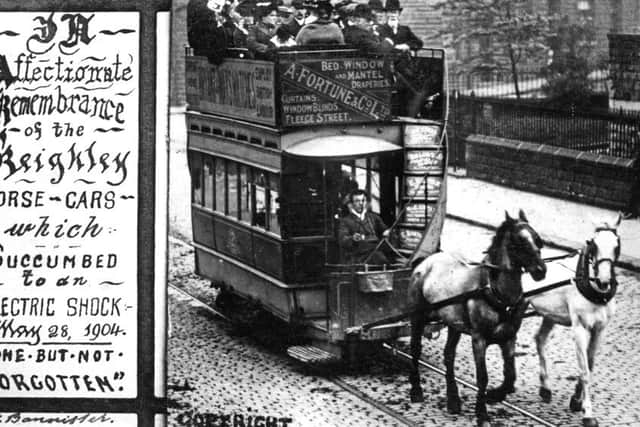

For the introduction of new electric tramways the following estimates were agreed upon for construction of routes and for materials: £6,579 (Ingrow route); £10,613 (Utley route); £8,751 (Stockbridge route); depot alterations, £1,160; overhead installations £6,036; eight tramcars £4,800; power cables £2,170; power station switchboard £819; alterations to gas and water mains £483; contingencies £1,387, totalling £42,790. Arthur W. Kirton, formerly of the Lancaster City Tramways and Colombo tramways became manager with an annual salary of £104. A small wooden office was built for him in Town Hall Square.
Before the electric tramway system officially opened to Ingrow, Utley and Stockbridge (Victoria Park) on October 12, 1904 there was an inspection during Wednesday morning on behalf of the Board of Trade by Major W. Pringle, R.E., and A.P. Trotter, an electrical expert. They were accompanied by the Keighley Mayor Ald W. Clough and Corporation, the Borough Engineer, the Borough Electrical Engineer, and representatives of the contractors. Opening to the public around 4.30 in the afternoon, the system carried 3,589 passengers on the first day. The Stockbridge route was extended to Dale Street on 10 February 1905.
Workmen’s trams started from the central terminus at 5.40 am with a regular service beginning at 7.30 am; the last cars operating from 11pm. A Sunday service ran between 1.30pm to 10pm. Initially, 10 tram drivers and 10 conductors were appointed at 6d and 5d per hour respectively.
Advertisement
Hide AdAdvertisement
Hide AdEight open top electric cars, seating 50, were purchased from Brush in 1904 and two more were added in 1905. A year later two balcony cars, seating 53 were acquired from Brush. The Keighley car livery was crimson and white.
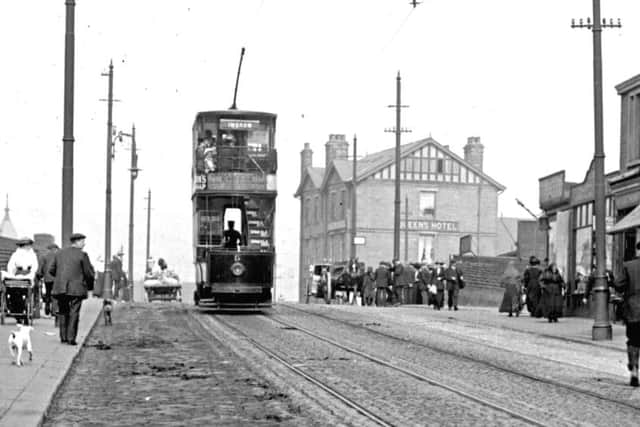

Tramways manager Kirton was dismissed on May 19 1905 after an alleged ‘amorous episode’ in his office and was replaced by J. W. Bamber on June 8 of the same year. Dogs were allowed to ride with their owners on the upper decks of trams from 1908 providing a 1d fare was paid. Before then they were encouraged to trot behind a vehicle.
Ten trackless trolleybuses, using the Austrian Cedes-Stoll propulsion method, were introduced between 1913 and 1917 to run beyond the tram routes. They eventually travelled from Utley to Sutton; Keighley to Oakworth; and Ingrow to Oxenhope. This was the first time this type of vehicle had been used in this country. But as the Cedes-Stoll system was Austrian, the company was wound up on the outbreak of war.
Twenty four members of Keighley Tramways staff enlisted to fight in the First World War and in 1916 women were employed. By 1917 all conductors were women.
Advertisement
Hide AdAdvertisement
Hide AdThe corporation’s decision to scrap the trams was mainly due to the heavy burden entailed in the repair and maintenance of the track.
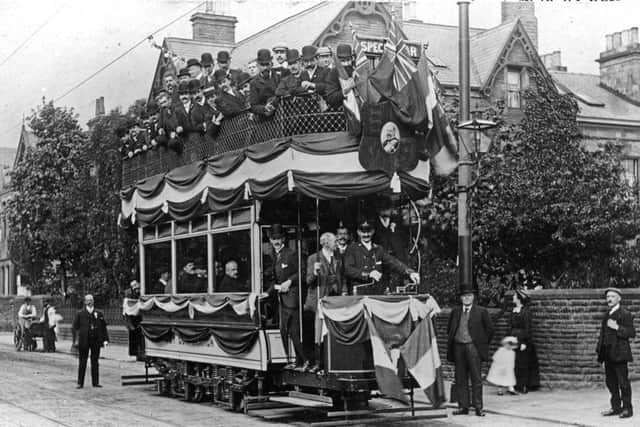

Trams were replaced by a new fleet of trolleybuses while the Cedes-Stoll vehicles were withdrawn by 1926. But, the newer trolleybuses had all being withdrawn in 1932.
Both trams and trolleys made losses for Keighley Corporation. The Cedes-Stoll system had a deficit of £22,701 between 1916 and 1924. Trams, £816 between 1914 and 1924.